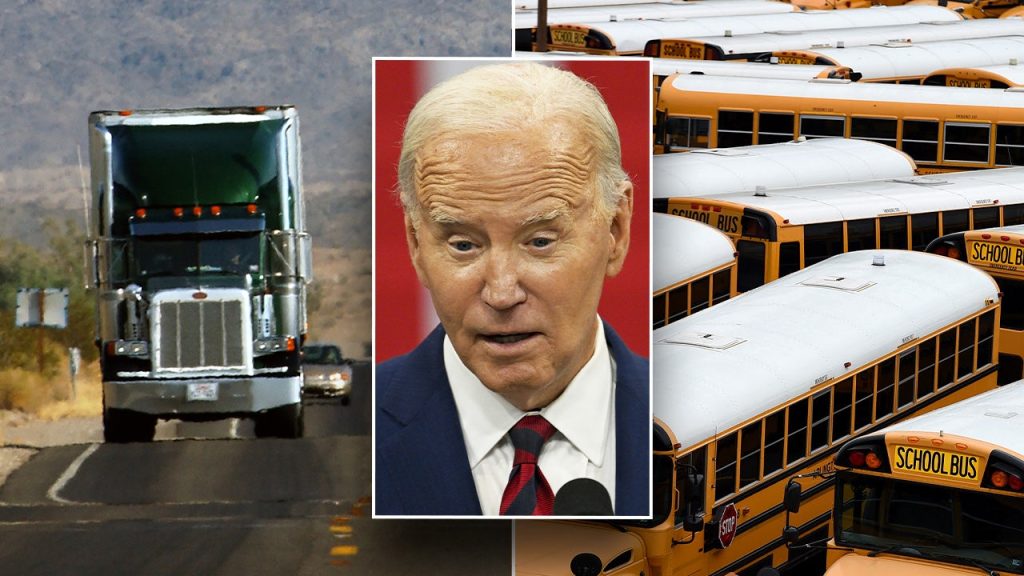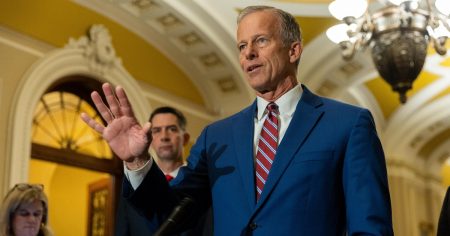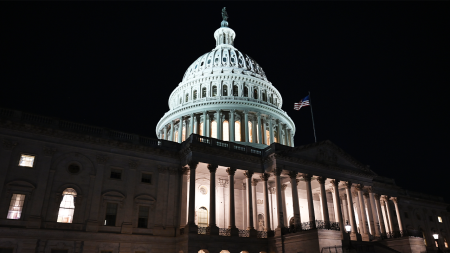The Biden administration has announced new regulations targeting emissions from heavy-duty vehicles such as trucks and buses, with the rules set to kick in from 2026 and become more stringent through 2032. These regulations are touted as the strongest-ever greenhouse gas emissions standards of their kind, and President Biden’s climate agenda is expected to benefit from them. The EPA claims that the regulations will avoid a billion tons of greenhouse gas emissions and provide $13 billion in annualized net societal benefits related to public health, climate, and business savings. The regulations will apply to a wide range of vehicles, including tractor-trailer trucks, delivery vehicles, garbage trucks, school buses, and more.
The trucking industry, representing 96% of small business truckers, immediately pushed back against the regulations, arguing that they would lead to higher costs for trucking companies. The Truck and Engine Manufacturers Association warned that the administration had overestimated the market penetration and adoption rates of electric trucks and the demand for them. Energy producers also expressed concerns, with the American Fuel & Petrochemical Manufacturers and the American Petroleum Institute calling on Congress to overturn the regulations. Despite the pushback, environmental activists have lauded the regulations as a crucial step in tackling the heavy carbon footprint of the trucking industry.
The regulations, aimed at cutting pollution from heavy-duty vehicles in response to the urgency of the climate crisis, are expected to set the industry on a trajectory for sustained growth. The transportation sector currently accounts for 29% of the nation’s total greenhouse gas emissions, with 23% attributed to medium- and heavy-duty trucks. Environmental activists have long called for federal action to address the trucking industry’s impact on emissions. The regulations are projected to lead to increased production of electric trucks, with potential benefits for public health, the climate, and the economy.
Republican lawmakers have been critical of the regulations, warning against targeting the heavy-duty vehicle industry while expressing concerns about the potential impact on the economy and supply chains. Sen. Dan Sullivan, R-Alaska, announced plans to introduce a resolution to rescind the standards once they are finalized, citing concerns about the rule’s impact on prices of essential goods such as gas, bread, and eggs. The pushback from Republicans is expected to continue as the regulations move forward, with industry groups and lawmakers expressing uncertainty about the technological and infrastructure capabilities needed to comply with the rule.
While the final standards are somewhat less stringent than initially proposed, they represent a significant step in the Biden administration’s efforts to address emissions from the transportation sector. The regulations come on the heels of the EPA’s multi-pollutant emission standards for light- and medium-duty vehicles, which were finalized last week. The administration continues to face challenges from industry groups, energy producers, and Republican lawmakers as it seeks to implement its ambitious climate agenda and reduce emissions from heavy-duty vehicles. The impact of the regulations on the trucking industry, the economy, and the environment will be closely monitored as they are implemented in the coming years.















